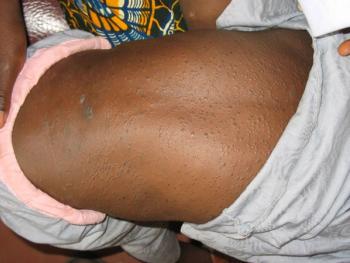
It is quite likely that we have entered a new era of treatment for individuals either mono-infected with HCV or co-infected with HCV/HIV. Details here.

It is quite likely that we have entered a new era of treatment for individuals either mono-infected with HCV or co-infected with HCV/HIV. Details here.

The START trial is likely to provide a definitive answer to one of the most important clinical questions in HIV management: when is the optimal time to start antiretroviral therapy.

Better understanding of this complex condition can lead to better patient care and prevention. This week’s photo quiz offers several presentations to test your knowledge.

Stark defunding for AIDS research may lead to increased pharmaceutical influence, less population diversity in research, and dwindling new HIV-specific advances.

Hepatocellular carcinoma can develop in HIV/HCV-coinfected patients with a previous sustained virological response with interferon-based therapy. Continued surveillance for HCC with ultrasound examinations in patients with cirrhosis who respond to anti-HCV therapy is recommended.

Incomplete adherence with anti-retroviral therapy can be associated with higher levels of residual HIV-1 viremia, according to a new study. Details here.

People with HIV infection are at high risk for invasive meningococcal disease. Current guidelines do not recommend vaccination against meningococcal disease for patients with HIV infection, but these patients can choose to be vaccinated.

Nondisclosure of HIV status is behavior with powerful implications for clinical trial enrollment. Could it happen in clinical care? Do we need to be wary? The question remains open.

A new retrospective analysis looks at the incidence of infection with common scourge Clostridium difficile in the specific context of HIV infection.

A classic sign helps determine the diagnosis. Do you recognize it?

Helios is 80 years old and was given a diagnosis of HIV infection in 1994. He's still taking the same combination of work-horse antiretrovirals he started with. I wanted to talk about changes. Helios didn't.

Cancer survivors have no consensus guidelines that outline optimal ongoing monitoring, prevention, or wellness strategies. In that absence, ASCO advocates a shared-care model for primary care physicians and oncologists.

Patients coinfected with hepatitis C virus (HCV) and HIV can develop rapidly progressive liver fibrosis.

First of all, it is important to know what exactly is meant by “the best.”

Discitis, a bacterial infection within the vertebral disc, typically results from seeding during an episode of bacteremia.

A 46-year-old man with a history of HIV infection presents to the emergency department for left flank pain. A lateral x-ray film of the patient’s lumbar spine is shown. What is the diagnosis?

Time to virologic failure among black patients on antiretroviral therapy was significantly shorter than for whites.

Pneumatosis cystoides intestinalisa rare condition, is characterized by gaseous cysts within the submucosal and subserosal spaces of the bowel wal

In hospitalized HIV patients, medication errors are common and can be mitigated by enlisting ID specialists.

The association of missed visits and increased mortality in HIV-infected patients is related to factors other than access to care.

Thirty-day hospital readmission rates in adults infected with HIV are driven largely by CD4+ count and length of stay.

“STD organisms are all part of an ecological pool that simply share one thing in common: sex," says the author of a new study. Testing for all important STD pathogens is the only way to detect all agents that might be involved in both symptomatic and asymptomatic patients. Details here.

HIV infection had ravaged Amber's immune system, but not her spirit. Here, her story told by the physician who continues to walk with her.

HIV occupational exposure leads to an estimated 1000 HIV infections among healthcare workers every year worldwide.

Current antiretrovial therapy is, on average, equally effective in both sexes and thus can be used in a similar way to treat HIV-infected men and women.